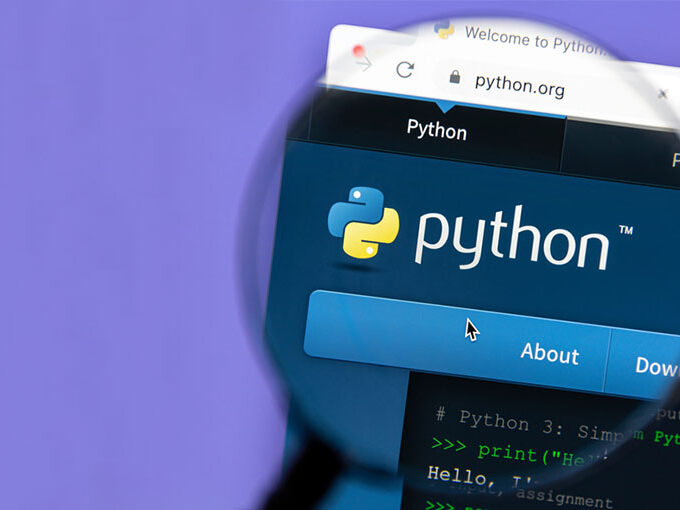JavaScript is still a popular programming language. It’s also dynamic and constantly evolving, expanding with new tools (around 0.5 million packages available for public access as of October 2017). No matter which frameworks or libraries JavaScript developers use to create JavaScript, the trend seems to be always one step ahead. These tools are designed to simplify development and aid in debugging. Every developer has a set of Javascript tools. In reality, there is no one best tool for efficiency. It all depends on what task you are trying to accomplish.
Before we present the list, let’s distinguish between the terms “frameworks”, “libraries” and “tools” in the context of software development.
- Framework – an abstraction that allows you to create applications in a standard manner. It also provides a lot of functionality such as events, data binding, and storage. JS examples: Node, Electron, Angular, Backbone.
- Library – A collection that contains certain functionality. It can include events, cookies, and network requests. A file containing functions that perform specific tasks. Examples of JS: Bootstrap, React, and Socket.io.
- Tool – A small assistant that makes the development process more efficient in terms of performance and maintenance. You can use compilers, image compressors, and task runners. Some JS examples include Browserify, JSLint, and Mocha.
This distinction can sometimes be difficult, but it is essential to navigating the JavaScript ecosystem.
Also read: What is Java Architecture? Components of Java Architecture
10 JavaScript tools you must know
We are focusing on tools and libraries that every JS developer must know or should at the very least, be able to use in order to remain relevant.
1. React
React was developed by Facebook engineers and released open-source in 2011. ReactJS provides new ways to render web pages. It has a dynamic user interface, high performance, and many other benefits. Reusability of code components is one of its key advantages. This is particularly useful when it comes to system upgrades and is time-saving. The components are isolated and don’t cause any changes to each other.
Data binding is one way (down), to allow a stable code, virtual DOM for speed to increase the speed and continuous improvements by the developer community to bring React.js up to the top. The same engineers also created Native, a framework for mobile app development, that supports both iOS and Android platforms.
2. Express
Node is a minimalist web framework that allows developers to create websites. Node.js is a JavaScript runtime environment that uses JS on the server. Express.js is fast, stable, and straight to the point. It provides robust tooling to HTTP servers and that’s its beauty.
It has the following features:
- Routing
- High coverage of the test
- HTTP helpers (caching, redirection, etc.)
- View system that supports multiple engines
- Fast execution for general apps
Express: Why choose Express? Express is ideal for websites, single-page applications, and HTTP APIs. Programmers will find the ability to create APIs very easy to use one of its most useful features.
3. Angul
Google’s JavaScript MVC-type framework Angular.js was developed by Google. It allows you to write client-side apps, supports HTML, and allows for precise structuring of interrelated components. With Angular developers do not have to write database, user interfaces, and links (model-view-controller) separately, the framework takes perfect care of that.
Angular, in simple terms, is a popular, single-page web app development tool that allows you to create modern web apps. It is part of the standard MEAN stack and is constantly being updated. The current version is 4.4.6. However, it is strange that the older and the newer versions are not compatible.
The main benefits of an Angular include:
- Cross-platform
- Automated code-splitting
- Command-line tools
- Ready for unit testing
- 2-way data binding
4. Electron
This framework is a great tool for building cross-platform apps and websites. Electron is built on Node.js, a Chromium engine, and supports all HTML, JS, and CSS packs. Slack and Jibo are just a few of the many apps that Electron supports.
It is freely available and compatible with Windows, Mac, and Linux systems. It includes pre-built demo applications APIs, Chromium tools for debugging, unit testing inside the environment, and code distribution.
This tool has a drawback: the size of the updates is about 40Mb due to Bundling with Chromium.
5. Gulp
Here’s a great example of JavaScript tools that are more specific to smaller tasks. Developers need to write code, create files and compress them, then compile and verify the code. GNU Make and other tools can automate these tedious tasks. However, we now have smaller, more precise task runners like Gulp.
Gulp is a toolkit that automates tasks by loading source files and data into a build folder. Gulp is faster than similar tools because it uses JavaScript code, has single-task plugins, and is fast. While it is widely believed that around 40% of web developers use it, others claim there is a simpler alternative. This tool is next on our wish list.
6. NPM
NPM has 3 million downloads, which equals Gulp. It is not just a task runner for general purposes but also a package manager to manage JavaScript and Node. You can also find thousands of reusable codes packages in the registry. NPM can also be used to build tools and is very flexible in its capabilities.
NPM supports two types of tasks: the default (for common issues like tests) or the arbitrary (for more specific issues such as a. Your own tasks. This tool is preferred by many developers to Gulp and Grunt. It has a greater number of plugins/packages, as well as fewer compatibility or debugging issues. NPM-run scripts can be powerful and convention-based, and they work with cross-platform projects. JavaScript developers need to look into this.
7. Webpack
A module bundler is a great tool for running multiple JavaScript files. It allows you to load dependencies such as.css and. sass into your browser in the correct order. Webpack is a great tool to bundle JS files for use in a browser. It can also package other assets.
Strong characteristics of Webpack include:
- Code splitting – dividing code into multiple pieces to reduce loading times
- Optimizations – Reducing the size and controlling the load at runtime and initial chunks, etc.
- Bundling: A single bundle or a few parts that can be loaded asynchronously.
- Compiling requires you to resolve dependencies
- Modular plugin system enables any task to be possible
- Possibility of using as a task runner.
There are also some drawbacks, such as the inability to load files during runtime. You may also find Browserify and RequireJS module bundles.
Also read: Essential Tips for Java Developer Should Learn in 2021
8. ESLint
Another important aspect of programming is code supervision, which helps to identify errors. Humans are human and sometimes miss closing brackets or variables. Linting is the process of analyzing code for potential flaws. ESLint is one of the most popular linting JS tools. It is in many ways the same as JSHint and JSLint.
ESLint comes pre-configured with a number of default rules. However, each rule can be configured by developers to make it their own. It supports NodeJS, Windows, Mac, and Linux. This tool is used by such as Domain, Microsoft, Domain, and Zendesk, who all confirm that ESLint is one of the most effective tools for JavaScript.
9. Vue.js
We’ll return to JS frameworks and finish with Vue.js, a more advanced framework for developing user interfaces. It’s an open-source, lightweight (20Kb zip), virtual DOM framework/library, made out of Angular. Vue uses HTML syntax to data-bind and offers tools for routing, scaffolding, animations, etc.
Vue is a similar project to React. It’s simple, performant, and supports all browsers. Vue seems to be getting more adoption from developers. It is possible that Vue may be a trendy and new project, but it is worth keeping an eye on what updates Vue’s large number of contributors might bring tomorrow.
10. jQuery
The JavaScript library is still the most used to create client-side apps (more than 70% of all websites including Google, MSN, and DailyMotion). It is a great tool for helping with syntax accuracy, small size, and striking features such as animations, event handling, Ajax calls, and animations. You can also create new plugins using jQuery.
jQuery foundation also provides useful and related tools such as jQuery UI, jQuery Mobile, and a CSS selector engine called Sizzle. jQuery UI allows you to design and tweak your user interface for web apps, reduce code for interactive features, and more. jQuery is a great tool to create dynamic web pages.
jQuery can be perceived as obsolete by many developers. Why is this? Many believe that the library became too popular with mediocre developers, which made it a server-side tool. A DOM-centric paradigm can be a major headache. This JS giant must not be forgotten.
Conclusion
We cannot possibly cover all of the JavaScript development tools for developers need to know in one article. These include Ember, Knockout, and Meteor as well as Svelte, Mocha, QUnit, and TypeScript. Remember that you have the freedom to choose from a variety of libraries and tools for JavaScript.










Leave a comment